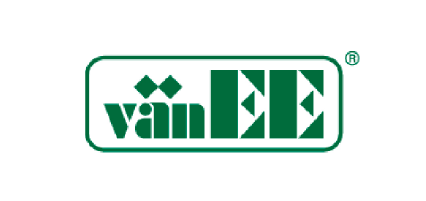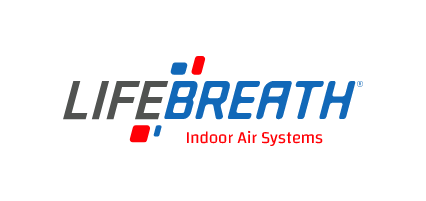Ventilation Systems
Naviagation
Call 519-941-8429 to schedule your HVAC appointment.
Call 519-941-8429 to schedule your HVAC appointment.
Heat Recovery Ventilation Systems in Orangeville
"Let Us Help You Decide on the Optimal Heat Recovery Ventilation Systems (HRV) for Your Home with a Free In-Home Quote"
Hyde Whipp provides heat recovery ventilation system installation and maintenance in Orangeville and the surrounding area. Heat Recovery Ventilation system, or HRV system, is an energy recovery ventilation system that functions by using a combination of three devices: a heat recovery ventilator, air exchanger and heat exchanger. Sometimes an air-to-air heat exchanger is used in place of an air exchanger to control air flow between the inside and outside.
HRV systems produce fresh air in an enclosed indoor environment to produce and increase the overall quality of the air due to improved circulation. HRV systems also reduce heating and cooling requirements for a home or business. The result is lower costs associated with the cooling or heating process. Energy recovery ventilators are closely related to HRVs, but they also transfer the humidity level of the exhaust air to the intake air and remove excess moisture that causes water to build up on your home’s windows.
Optimize Your Home
The effort to improve the energy efficiency of a home or building usually means better insulation and weatherstripping. Homes and buildings are becoming more airtight than they once were. This is a plus when it comes to conserving energy. However, a trade-off for having an airtight house or building is reduced air circulation. All homes and buildings must have a source of fresh air. This is where an HRV system becomes necessary.
With the weather varying so much in Orangeville and the surrounding area, opening a window is only practical to a certain point. In the summer, an open window brings in humidity. In the winter, heat escapes if a window is opened. Additionally, many climate-controlled buildings have windows that do not open at all. HRVs offer a practical solution to this problem. Fresh air is provided along with better climate control while maintaining energy efficiency.”
Ventilation System Installation - Heat Recovery Ventilation
"Contact us for a Free In-Home Installation Quote"
An HRV can operate as a stand-alone device operating independently or be built-in. An HRV can also be added to an existing HVAC system. HRV systems can be designed to serve homes, a small building, a single room or a larger building. A larger building may require one of two options, either one large central unit or several small units. The building must have some form of air supply provided either through ducts or an exterior wall.
An energy supply is also required for air circulation. If used with a central HVAC system, the HRV setup would be considered a forced-air system. Different types of heat exchangers can be used in HRV devices. Some of these include a heat pipe, multiple heat wires, cross flow heat exchanger, a thermal wheel or rotary heat exchanger or ground-coupled heat exchanger. The HRV installation process varies based on the type of structure in place when an HRV is setup.
The easiest installation procedure is with an existing ducting system. Keep in mind that bath exhaust ducts will no longer be necessary with an HRV since the HRV system performs the same function as a bath exhaust duct.
Location is an important part of the installation process. HRV systems need to be accessible for routine maintenance and service. The most common place to install an HRV is in the basement or attic. The basement should be the first choice, if possible.
In order to avoid conflict with the HRV, a kitchen should have a range hood fan of 200 cfm or less to avoid conflict with HRV systems. Another concern is the dryer. Clothes dryer fans do not operate long enough to cause any serious issues. Ventilation ducts for an HRV are either four-inch ducts or six-inch ducts.
The safest approach to HRV installation is let a Hyde-Whipp professional tackle the job to ensure that all safety and installation standards have been followed for maximum efficiency of operation.
Call Hyde-Whipp for a free installation quote in Orangeville or the surrounding area at 519-941-8429
Ventilation System Repair & Maintenance - Heat Recovery Ventilation
HRVs need to be balanced so that air intake matches exhaust output. The most common HRV maintenance is to change the filters on a regular basis. Typical maintenance for an HRV system involves turning off and unplugging the HRV for safety reasons. Air filters should be cleaned or replaced. HRV filters should be cleaned at least once every 2-3 months. Most HRV filters can be cleaned with mild soap or water or a vacuum. Older units come with replaceable filters.
Outdoor intakes and exhaust hoods need to be checked for leaves and other obstructions at least once per season. Snow or frost can buildup during winter months and block outside vents. If the HRV system has a condensate drain (a pipe or tube visibly coming out of the bottom of the unit) it should be cleaned to ensure that it is flowing properly.
The heat exchange core should be inspected to maintain efficient operation of the unit. This type of maintenance should be performed at least once a year.
Ductwork leading to and from the HRV should be properly inspected and cleaned once a year. This includes removing and inspecting grilles that cover the duct ends. Dirt accumulates on the fans. These should be inspected 2-3 times a year.
New models are designed to run continuously, while older models need motor lubricating oil to run efficiently. Due to the requirements of extensive maintenance, a professional should perform inspections and regular cleanings.
Hyde-Whipp are trained professionals that know what to look for and how to clean the unit properly, allowing the Heat Recovery Ventilation system to run with maximum efficiency.
Call Hyde-Whipp at 519-941-8429 or contact us here for all your hot water tank repair and service needs in Orangeville & the surrounding area.





